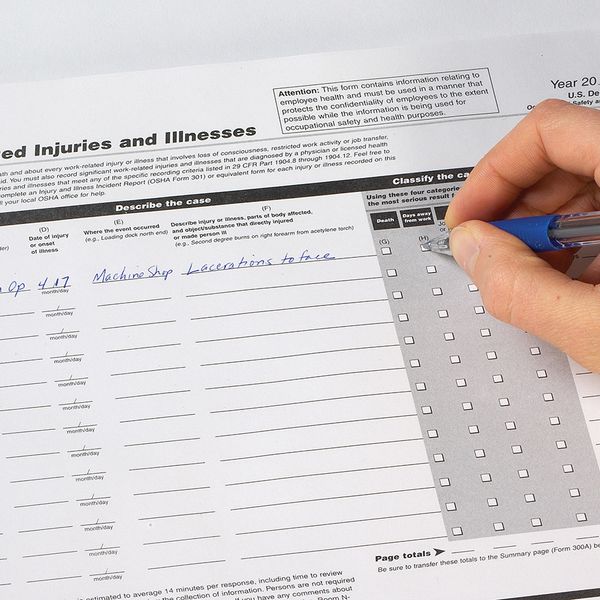Most employers identify hazards from injury records, survey finds
Most employers have identified workplace hazards upon reviewing injury records, but only half had tried informing medical providers about OSHA’s recordkeeping rules to reduce recordable cases.
During two recent presentations on OSHA injury recordkeeping, we asked attendees if they’d ever identified workplace hazards by reviewing injury records. We also asked if they’ve worked with a medical provider on understanding OSHA’s recording criteria, particularly the list of first aid treatments.
Finding hazards
Reviewing the OSHA 300 Log is commonly suggested as a way to identify recurring workplace hazards. If a particular type of injury happens frequently, employers should be able to take steps to prevent future incidents. Therefore, our first question was “Have you identified workplace hazards by reviewing injury records?”
Between two events hosted on January 11 and January 16 of 2024, a total of 359 attendees responded, with 80 percent saying “Yes,” they have identified recurring hazards that they could address. Only 8 percent answered “No,” and another 12 percent had never checked.
We provided the “never checked” option because smaller employers might not have much of a data set. If a facility experiences only a handful of injuries per year (or zero injuries), the data might not show any recurring hazards.
Employers identified a variety of recurring hazards, but some of the most commonly mentioned included:
- Ergonomic issues such as sprains and strains from lifting and material handling;
- Cuts and lacerations to hands that required new gloves or sleeves; and
- Recurring problems with slips, trips, and falls.
Medical treatment
The two presentations also discussed medical recommendations that make a work-related injury recordable. Any treatment beyond first aid counts as medical treatment, including prescription-strength medications. Sometimes a doctor will recommend a prescription or antibiotic as a precaution, even if an over-the-counter medication might have been sufficient. Regardless of whether the employee fills the prescription, that recommendation makes the case recordable on the OSHA 300 Log. Our second question therefore asked, “Have you worked with a clinic to minimize medical recommendations?”
Nearly half of the 383 respondents (49 percent) answered “No,” but 44 percent said “Yes,” they have worked with a medical provider to explain how recommended treatments affect OSHA recordables. The remaining 7 percent had on-site medical facilities, which really helps with ensuring that only necessary treatment is provided.
Obviously, employers want injured workers to get whatever treatment they require. However, if a non-prescription drug would suffice, employers may ask that a lesser treatment be given when possible. Of course, employers should be clear that the ultimate determination is left to the medical professional.
In some states, injured workers may choose which doctor to visit, including their personal physician. This increases the challenges of communicating with medical professionals on the treatments offered. Other states allow employers to provide a list of medical providers for workers’ compensation claims, which helps improve communication.
For related information on medical treatment, see our article Can I get a second opinion? I want to delete an OSHA recordable.
Keep in mind that OSHA does allow getting a second opinion on whether recommended treatments, restrictions, or days away were necessary. If the second opinion is more authoritative, the employer might remove the case from the 300 Log. The employer must obtain the second opinion in a relatively short time frame. Also, the employer cannot remove the incident from the 300 Log if the employee already had medical treatment, worked with restrictions, or missed days of work.
Key to remember: Reviewing injury logs can help identify hazards that could be addressed, reducing the risk of future incidents.


















































